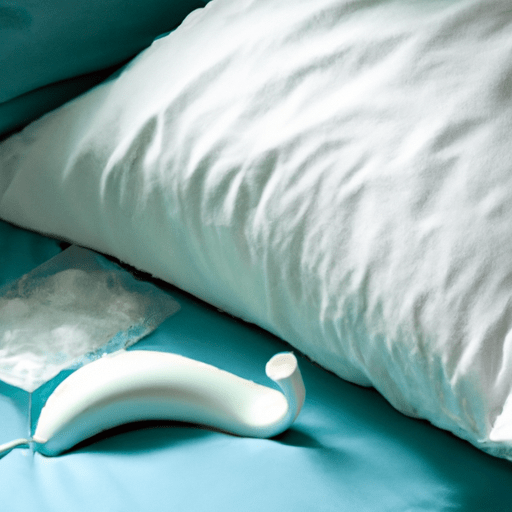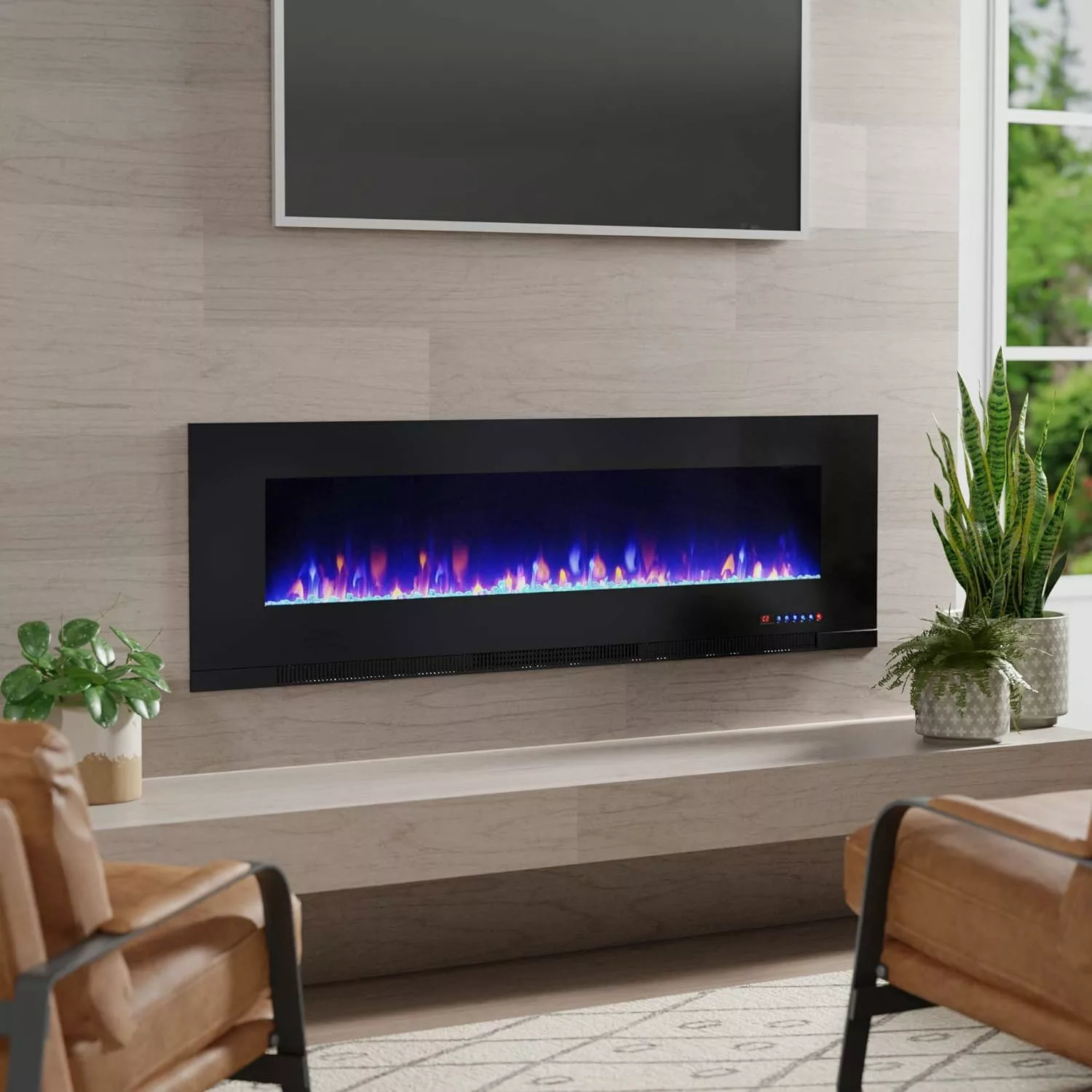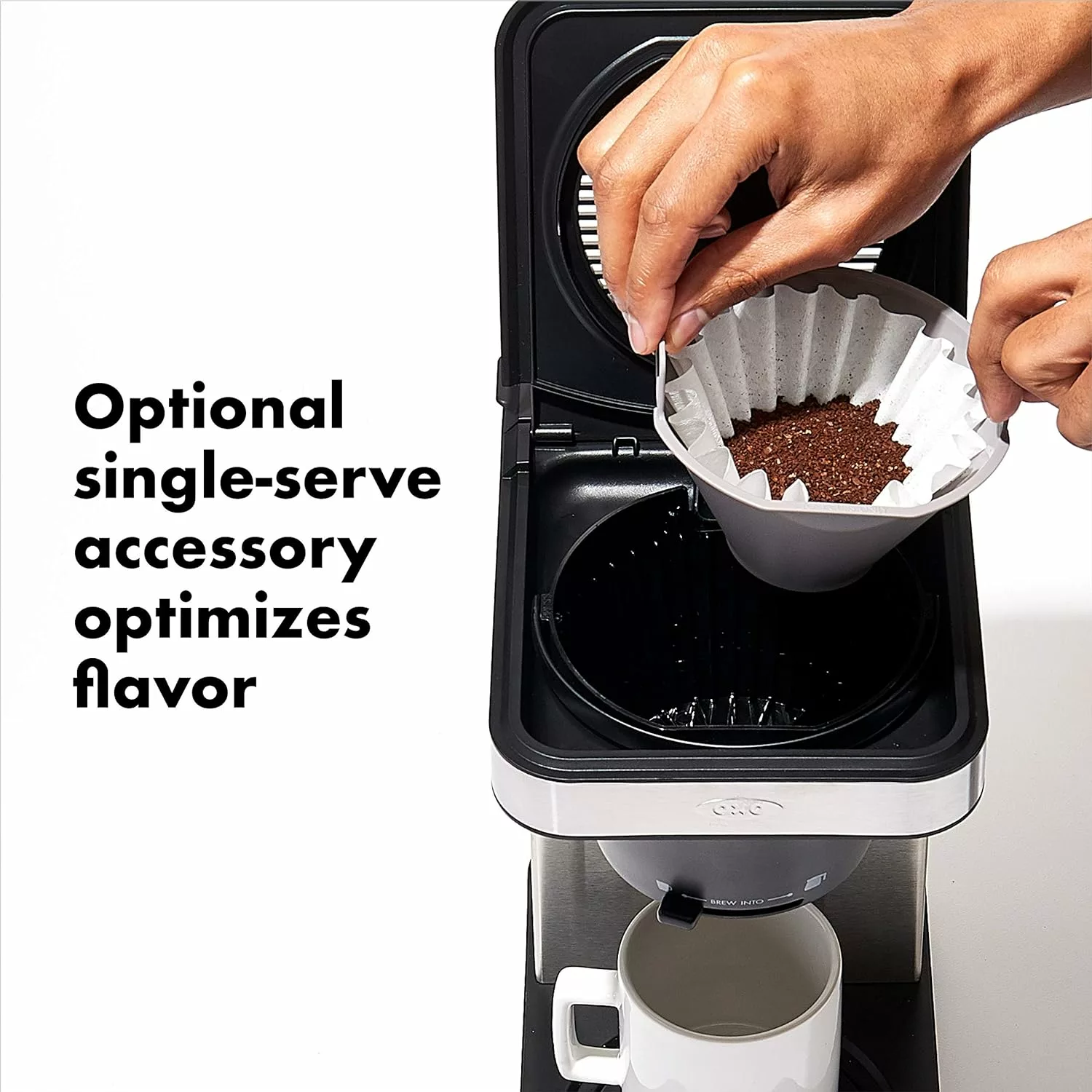Are you tired of waking up your entire household every morning with the loud grinding noises of your coffee grinder? Fear not, because we’ve got you covered! In this article, we will provide you with 10 practical tips to help make your coffee grinder quieter, ensuring a peaceful and serene start to your day. From simple adjustments to creative hacks, these suggestions will help you achieve a more enjoyable coffee grinding experience without disturbing anyone’s beauty sleep. So, grab your favorite mug and get ready to discover these noise-reducing secrets!
Understanding Why Your Coffee Grinder is Noisy
When it comes to grinding your coffee beans, the loud and grating noise produced by your coffee grinder can be quite bothersome. Understanding the reasons behind the noise can help you find effective solutions to make your coffee grinder quieter. Let’s explore the different types of noises coffee grinders make and the common reasons behind them.
Different Types of Noises Coffee Grinders Make
Coffee grinders can produce various types of noises, each indicating a different issue. Some common noises include a loud rattling sound, a high-pitched squealing noise, or a deep grinding sound. These noises are often a result of underlying issues with the grinder’s components or settings.
Common Reasons why Coffee Grinders Become Noisy
There are several reasons why your coffee grinder may become noisy. One common issue is the accumulation of coffee grounds and oils, which can clog the grinding mechanism and cause it to work harder, resulting in increased noise. Another reason could be worn-out or damaged components, such as burrs or blades, which can produce grinding or scraping sounds.
The Importance of Regular Maintenance to Reduce Noise
To reduce the noise produced by your coffee grinder, regular maintenance is essential. By following a few simple steps, you can keep your grinder in top condition and minimize noise.
Cleaning Your Coffee Grinder Regularly
Regular cleaning of your coffee grinder is crucial to prevent the build-up of coffee grounds and oils. Empty the grinder after each use and brush away any residual grounds. Every few weeks, depending on usage, give your grinder a deep clean by removing the burrs and other removable parts to get rid of any stubborn residue.
Checking Components for Wear and Tear
Inspecting your grinder’s components, such as the burrs or blades, is vital in identifying any wear and tear. Look for signs of damage or dullness, as these can affect the grinder’s performance and contribute to increased noise. If necessary, consider replacing these worn out parts to restore your grinder’s functionality and reduce noise.
Replacing Worn Out Parts
If you notice significant damage or wear on your grinder’s components, it might be time to replace them. Investing in new burrs or blades can significantly improve the grinding process and reduce noise. Consult your grinder’s manual or contact the manufacturer for guidance on finding and installing the correct replacement parts.

This image is property of images.unsplash.com.
Using the Right Type of Coffee Beans
Believe it or not, the type of coffee beans you use can have an impact on the noise level of your grinder. Let’s explore the relationship between coffee bean type and grinder noise and discover how moisture content in beans affects grinder noise.
Exploring the Relationship Between Coffee Bean Type and Grinder Noise
Different coffee bean types have different densities, sizes, and moisture content, which can affect how they interact with a grinder. Harder beans, such as Arabica beans, generally require more force to grind and can contribute to a louder grinding noise. Softer beans, like Robusta beans, may be easier to grind and produce a quieter operation.
Choosing the Right Coffee Beans for Your Grinder
If noise reduction is a priority, consider experimenting with different coffee bean types to find one that produces a quieter grinding process. Opting for softer beans or blends that contain a higher percentage of softer beans can help minimize noise. It’s always a good idea to try different beans and observe the impact on the noise level to find the best fit for your grinder.
How Moisture Content in Beans Affects Grinder Noise
The moisture content of coffee beans can also influence the noise level of your grinder. It’s important to note that freshly roasted coffee beans tend to have higher moisture content, which can result in a louder grinding noise. Allowing the beans to rest and reach a stable moisture level before grinding can help reduce noise. Opting for drier beans or adjusting the grind settings accordingly can also help in minimizing noise.
Adjusting Grinder Settings
Another way to make your coffee grinder quieter is by adjusting its settings. Understanding the effect of grinder settings on noise and fine-tuning them can significantly improve your grinding experience.
Understanding the Effect of Grinder Settings on Noise
Grinder settings, such as grind size and speed, can have a direct impact on the noise level produced. A finer grind tends to require more power and can result in a louder noise, while a coarser grind may be quieter. Adjusting the speed of the grinder can also affect the noise level, with higher speeds generally producing louder sounds.
Adjusting the Grind Size and Speed
Experimenting with different grind sizes and speeds can help you find the optimal settings for your desired noise level. Start by adjusting the grind size slightly coarser and gradually fine-tune until you achieve the desired result. Similarly, adjusting the grinder’s speed, if possible, can help in finding the right balance between noise and performance.
Fine-tuning Other Grinder Settings to Minimize Noise
In addition to grind size and speed, there may be other settings or features on your grinder that you can adjust to minimize noise. Check your grinder’s manual or consult the manufacturer to explore any additional options available. For example, some grinders offer noise-reducing settings specifically designed to provide a quieter operation.

This image is property of images.unsplash.com.
Soundproofing Your Kitchen
If the noise from your coffee grinder is still a concern, soundproofing your kitchen can be an effective solution. Let’s explore the benefits of soundproofing your kitchen and how you can use sound-absorbing materials to reduce noise.
Benefits of Soundproofing Your Kitchen
Soundproofing your kitchen not only helps in reducing the noise produced by your coffee grinder but also creates a more peaceful environment overall. It can also prevent the noise from spreading to other areas of your home, allowing you to enjoy your coffee without disturbing others.
Using Sound Absorbing Materials in Your Kitchen
One option for soundproofing your kitchen is by using sound-absorbing materials. These materials can help minimize noise by absorbing the sound waves generated by your coffee grinder. Consider installing acoustic panels on the walls or ceiling, or placing sound-absorbing mats or rugs on the floor to effectively reduce noise.
Placement of Your Grinder to Reduce Noise
Proper placement of your coffee grinder can also play a role in noise reduction. Keep your grinder away from hard surfaces or walls that may reflect and amplify the noise. Consider placing the grinder on a sturdy, vibration-absorbing surface, such as a rubber mat, to further dampen the noise.
Using a Grinder Mat
Investing in a grinder mat is another effective way to reduce noise. Let’s explore how a grinder mat can help minimize noise, how to choose the right mat for your grinder, and best practices for using it.
How a Grinder Mat Can Reduce Noise
A grinder mat serves as a cushioning layer between your coffee grinder and the countertop, effectively reducing noise caused by vibrations. The mat absorbs the vibrations, preventing them from transferring to the surrounding surfaces and minimizing the overall noise level.
Choosing the Right Mat for Your Grinder
When selecting a grinder mat, consider factors such as thickness, material, and size. Opt for a mat that is thick enough to provide sufficient cushioning, made from a material that effectively absorbs vibrations, and fits well under your grinder. Rubber or silicone mats are often preferred for their vibration-dampening properties.
Best Practices for Using a Grinder Mat
To maximize the noise reduction benefits of a grinder mat, make sure to place it on a stable surface, such as your kitchen countertop. Ensure that the mat provides sufficient coverage, extending beyond the dimensions of your grinder, to effectively absorb vibrations. Regularly clean the mat to prevent the build-up of coffee grounds or oils, which can affect its performance.
This image is property of images.unsplash.com.
Investing in A Quieter Model
If all else fails and reducing the noise output of your current coffee grinder seems impossible, it may be worth considering investing in a new grinder specifically designed for quieter operation. Let’s explore the factors to consider when choosing a quiet grinder, recommended quiet grinder models, and the pros and cons of making this investment.
Factors to Consider When Choosing a Quiet Grinder
When selecting a quieter coffee grinder, consider factors such as noise level specifications, build quality, and customer reviews. Look for grinders that specifically advertise their noise reduction features or have a reputation for being quieter. Research customer experiences and feedback to ensure the grinder meets your expectations regarding noise levels.
Recommended Quiet Grinder Models
There are several quiet grinder models available in the market that are known for their noise reduction capabilities. Some popular options include the Baratza Virtuoso+, Breville Smart Grinder Pro, and Rancilio Rocky. These models have received positive reviews for their grinding performance, durability, and reduced noise levels.
Pros and Cons of Investing in a New, Quieter Grinder
Investing in a new, quieter grinder has its pros and cons. On the positive side, a new grinder can provide a significant reduction in noise levels, giving you a more pleasant coffee grinding experience. Additionally, newer models often come with improved features and functionalities. However, it’s essential to consider the cost of a new grinder and whether it aligns with your budget and preferences before making the investment.
Using Anti-Vibration Pads
Quieting your coffee grinder can also be achieved by using anti-vibration pads. Let’s explore how these pads work, how to install them for your grinder, and how to choose the right anti-vibration pads.
How Anti-Vibration Pads Work
Anti-vibration pads are designed to absorb and dampen vibrations, minimizing the noise produced by your coffee grinder. These pads are typically made from materials with high vibration absorption properties, such as foam or rubber. By placing these pads under your grinder, you can significantly reduce the transfer of vibrations to the surrounding surfaces, resulting in a quieter operation.
Installing Anti-Vibration Pads for Your Grinder
To install anti-vibration pads for your grinder, start by ensuring your grinder is clean and free of any residual coffee grounds or oils. Place the pads on a stable and flat surface, such as your countertop or a designated area for coffee preparation. Gently place your grinder on top of the pads, making sure it is stable and secure. The pads should effectively absorb the vibrations and reduce noise.
Choosing the Right Anti-Vibration Pads
When choosing anti-vibration pads for your grinder, consider the size and weight of your grinder. Ensure that the pads are suitable for the weight and dimensions of your grinder to provide optimal vibration absorption. Look for pads that are specifically designed for heavy-duty use and have good customer reviews regarding their vibration-dampening capabilities.
Using Grinder at Non-Peak Times
Using your coffee grinder at non-peak times can also help in managing noise levels effectively. Let’s explore how the time of day affects noise levels, choosing optimal times to use your grinder, and possible challenges and how to overcome them.
Understanding How Time of Day Affects Noise Levels
The time of day can have an impact on the noise level produced by your coffee grinder. For example, using your grinder during early morning or late at night may be particularly disruptive to others in your household or neighbors. Understanding these noise-sensitive periods can help you make considerate choices regarding when to use your grinder.
Choosing Optimal Times to Use Your Grinder
To reduce noise disturbance, consider using your coffee grinder during periods when others are less likely to be affected. Find a balance between your personal routine and a time when noise sensitivity is low, such as during mid-morning or mid-afternoon. By planning your coffee grinding sessions accordingly, you can minimize noise-related conflicts.
Possible Challenges and How to Overcome Them
While using your coffee grinder during non-peak times can be beneficial, it may present challenges if it conflicts with your daily schedule or routine. One way to overcome this challenge is by grinding your coffee beans ahead of time and storing them in an airtight container. This allows you to enjoy freshly ground coffee without the need to operate the grinder during noise-sensitive periods.
Helpful Tools for a Quieter Coffee Grinding Experience
In addition to the methods mentioned above, there are several products and techniques available to help make your coffee grinding experience quieter. Let’s explore some of these tools and methods, including products to dampen the sound of your coffee grinder, non-invasive methods to quiet your coffee grinder, and whether magical fixes really work.
Products to Dampen the Sound of Your Coffee Grinder
Certain products are specifically designed to reduce noise generated by coffee grinders. These include sound-dampening enclosures or boxes that can be placed over your grinder during operation. These enclosures are lined with noise-absorbing materials and effectively muffle the sound, allowing for a quieter grinding experience.
Non-Invasive Methods to Quiet Your Coffee Grinder
If you prefer non-invasive methods, there are alternative ways to reduce noise without modifying your grinder. Placing a towel or cloth underneath your grinder can help absorb vibrations and minimize noise. Additionally, using noise-cancelling headphones or playing white noise in the background can help mask the grinder noise.
Magical Fixes: Do They Really Work?
While some methods claim to be magical fixes for a quieter coffee grinding experience, it’s important to approach them with skepticism. It’s unlikely that there is a one-size-fits-all solution that completely eliminates grinder noise without compromising performance or convenience. It’s best to focus on the scientifically proven methods discussed earlier and experiment with different techniques to find the best fit for your specific grinder and preferences.
In conclusion, understanding why your coffee grinder is noisy and implementing effective strategies to reduce noise can greatly improve your coffee grinding experience. Regular maintenance, choosing the right coffee beans, adjusting grinder settings, soundproofing your kitchen, using a grinder mat, investing in a quieter model, using anti-vibration pads, considering non-peak usage times, and exploring helpful tools and methods can all contribute to a quieter and more enjoyable coffee grinding process. With these tips in mind, you can start your day with freshly ground coffee without disturbing the peace and quiet of your surroundings.





